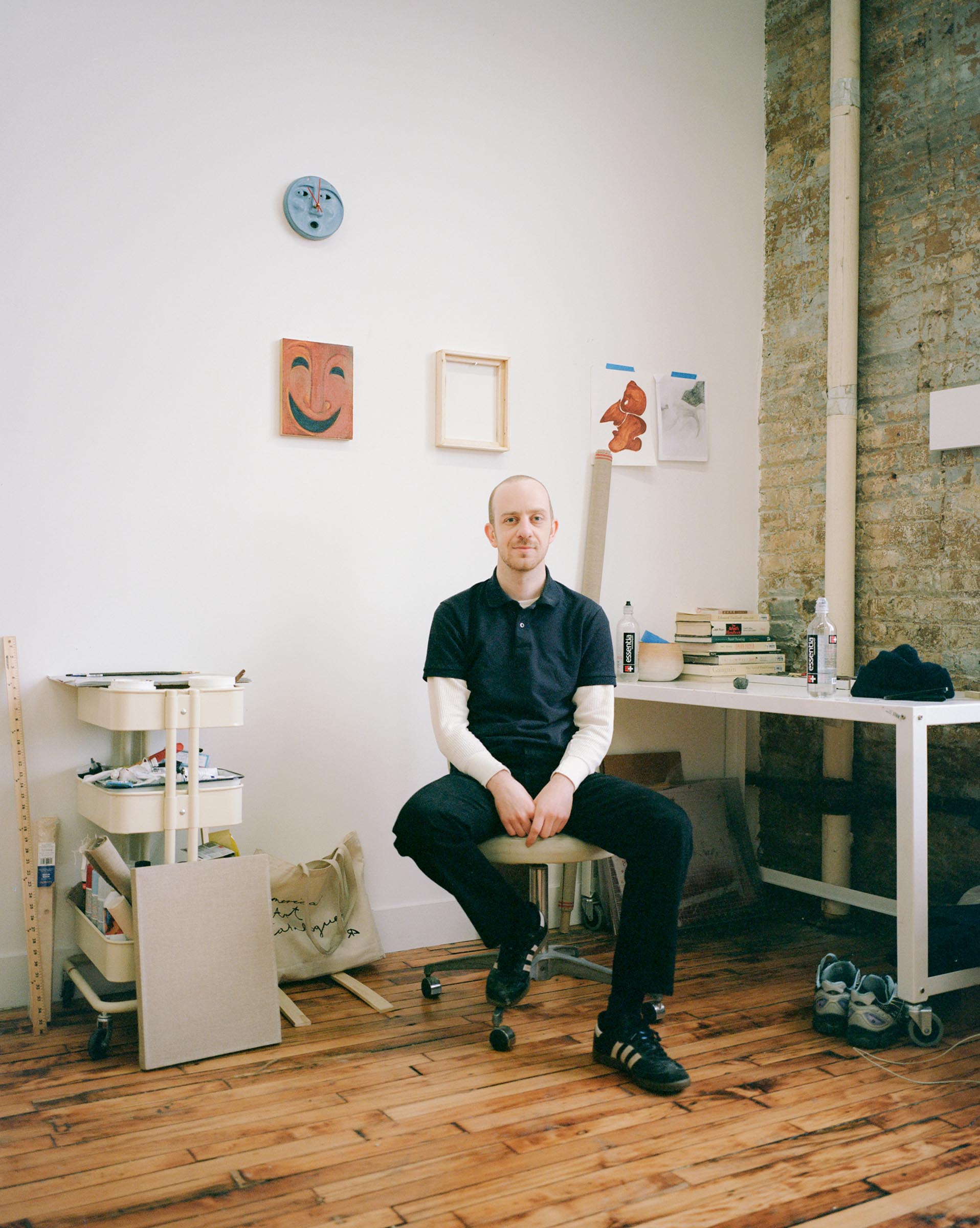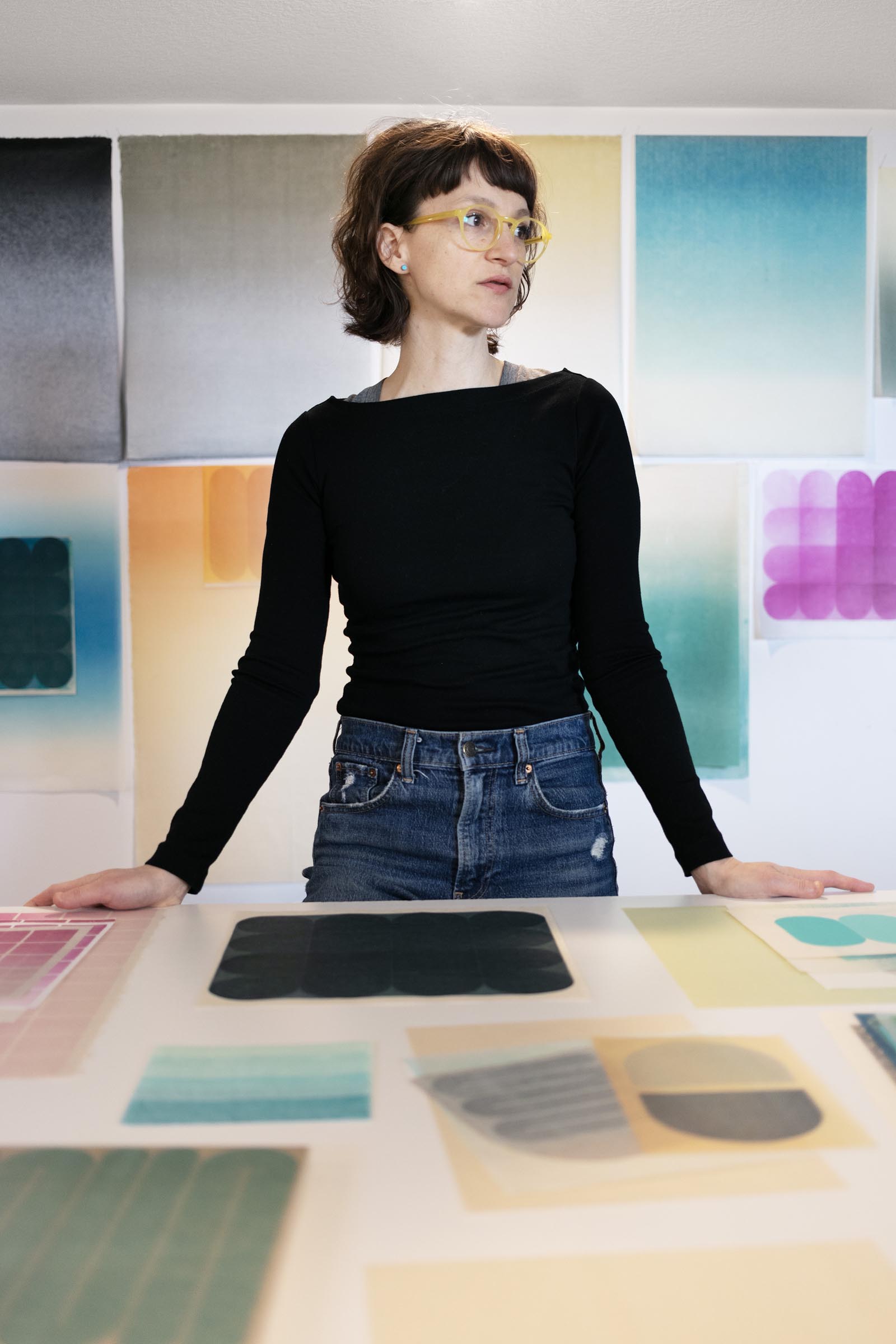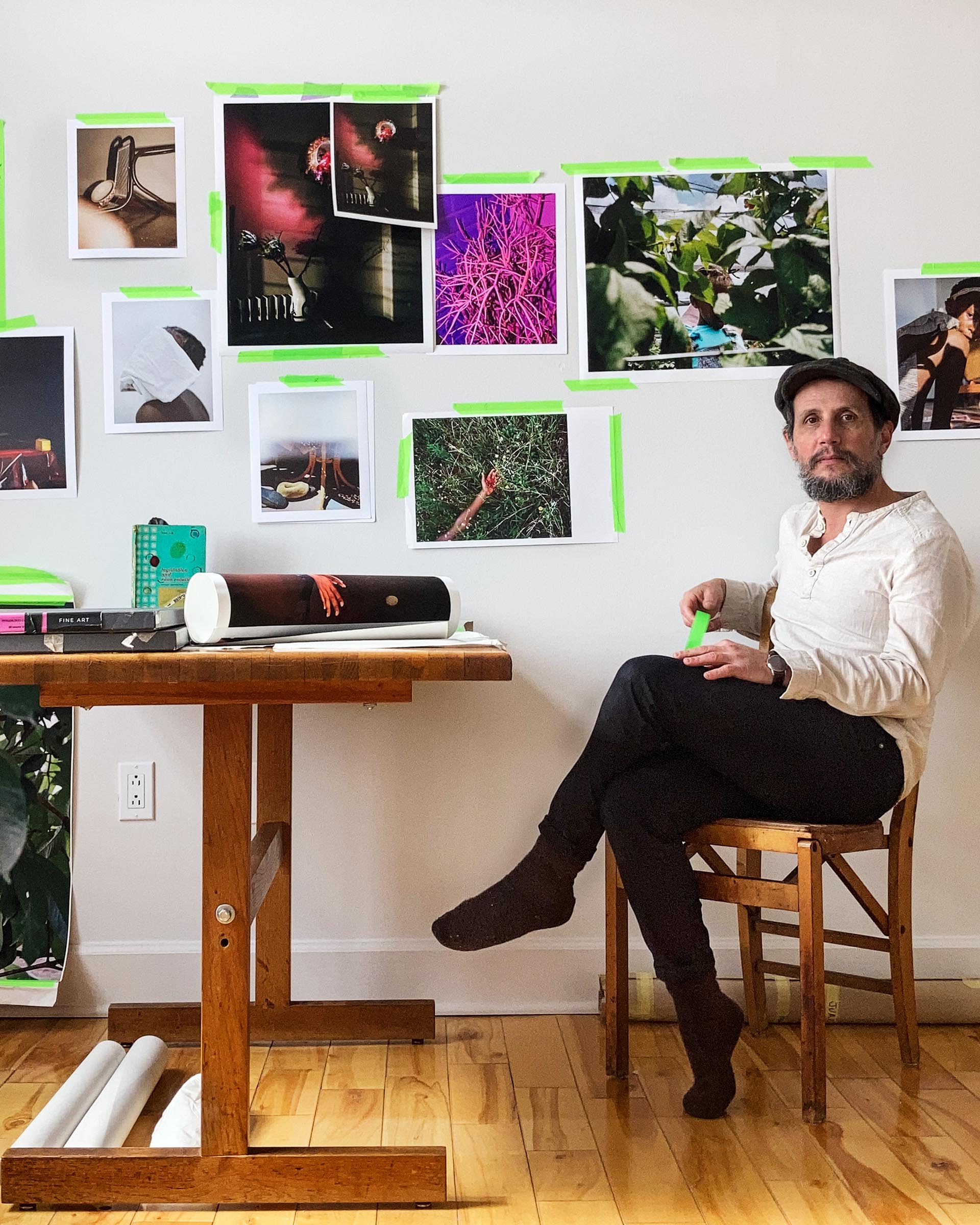How did you get into making art?
I moved to Bloomington from Seoul, South Korea in 2010. Living in a totally new environment as a foreigner during the first few years allowed me to have some time for self-reflection on who I am and reinvent myself. Surrounded by cultural and artistic resources and opportunities in this university city, I was motivated to revisit my lifelong interest in painting. I began to audit different painting and drawing classes at Indiana University Bloomington. It was a painting class taught by Gabe Phipps, a visiting professor in Painting at IU at the time, that opened up a whole new world for me. He taught me how to see the world with the lens of abstraction. Also, through another painting class taught by Caleb Weintraub, I became aware of many contemporary approaches to painting, that broadened my perspective of painting. With the support and encouragement of these two painting teachers, I enrolled in the Tyler Summer Painting and Sculpture Intensive program at Temple University in Philadelphia. There, I began to develop my own abstract approach to painting. The following year, I pursued my MFA degree program in Painting at Indiana University. Since graduation from IU in 2019, I have continued to foster my artistic career by attending art in residence programs.
Su A Chae
The artist discusses the power of self-reflection, paradoxical spatial statements & multiple layered realities, and a lifelong interest in painting
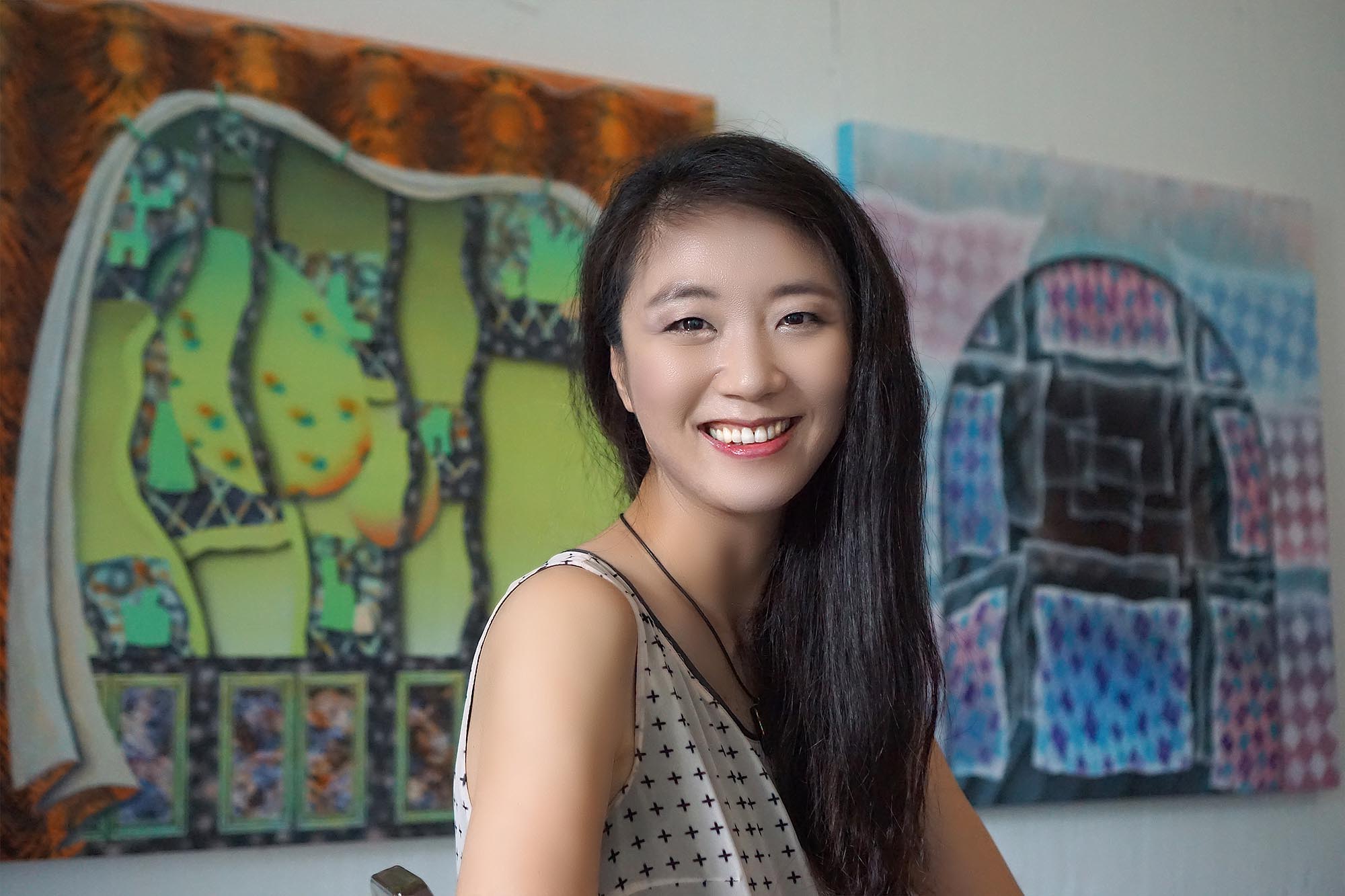
Su A Chae, 2020


What are you currently working on?
I am currently working on non-studio work, such as writing applications, researching painting ideas, and doing some digital drawing. Before the pandemic situation, I was developing a few bodies of work that I started to make at Vermont Studio Center this past winter. Some paintings are the prolongation of the body of work that examines the paradoxical spatial statements within the enigmatic space framed by biological patterns, like tiger or leopard skins. Having responded more directly to the balance issue, those paintings show the distinct division of two main spaces. While in the VSC, I made two paintings titled, the “Battle of Flowers” that are focused on a tension in relationship and abstract narratives. Bringing more dynamics and movements, I was working on new paintings along the same lines. Those paintings will constitute another body of work with the two “Battle of Flowers”. Also, I was reworking on my old unresolved small paintings when I got an idea from the current work.
What inspired you to get started on this body of work?
To be exact, two bodies of work are shown in my feature. The more recent body of work has an organic and biological feel in patterns, shapes, and colors, whereas the older work has a geometric and checkerboard-like quality to the patterns and shapes. I started on each body of work with different inspirations and ideas. The older body of work was based on my experience or anecdotes from life. I used them for a compositional idea and a metaphor to speak about a bigger story, that is often related to socio-political issues, rather than for a specific storytelling. My original narrative is hidden with abstraction, and I leave it up to the viewers to see their own multiple layered reality and create their own story. For example, I made a painting titled the “Language Barrier” based on the experience that I put multiple crumpled pieces of paper into my mouth one by one until my mouth is full of the paper, in order to make a video piece. Oftentimes, the titles of my work give clues about what my original anecdotes are, but you’ll never know what they are exactly until I share them. I began on the more recent body of work when I came across an image of a Korean folding screen, known as chaekgeori, by Jang Hanjong in the late 18th century. The dramatic spatial division by the curtain and the structural quality within the bookshelf screen painting gave me an idea of how to create a paradoxical space where the tension between the macro and the micro exists. The image of Korean painting is obviously a reference to my cultural identity as well.
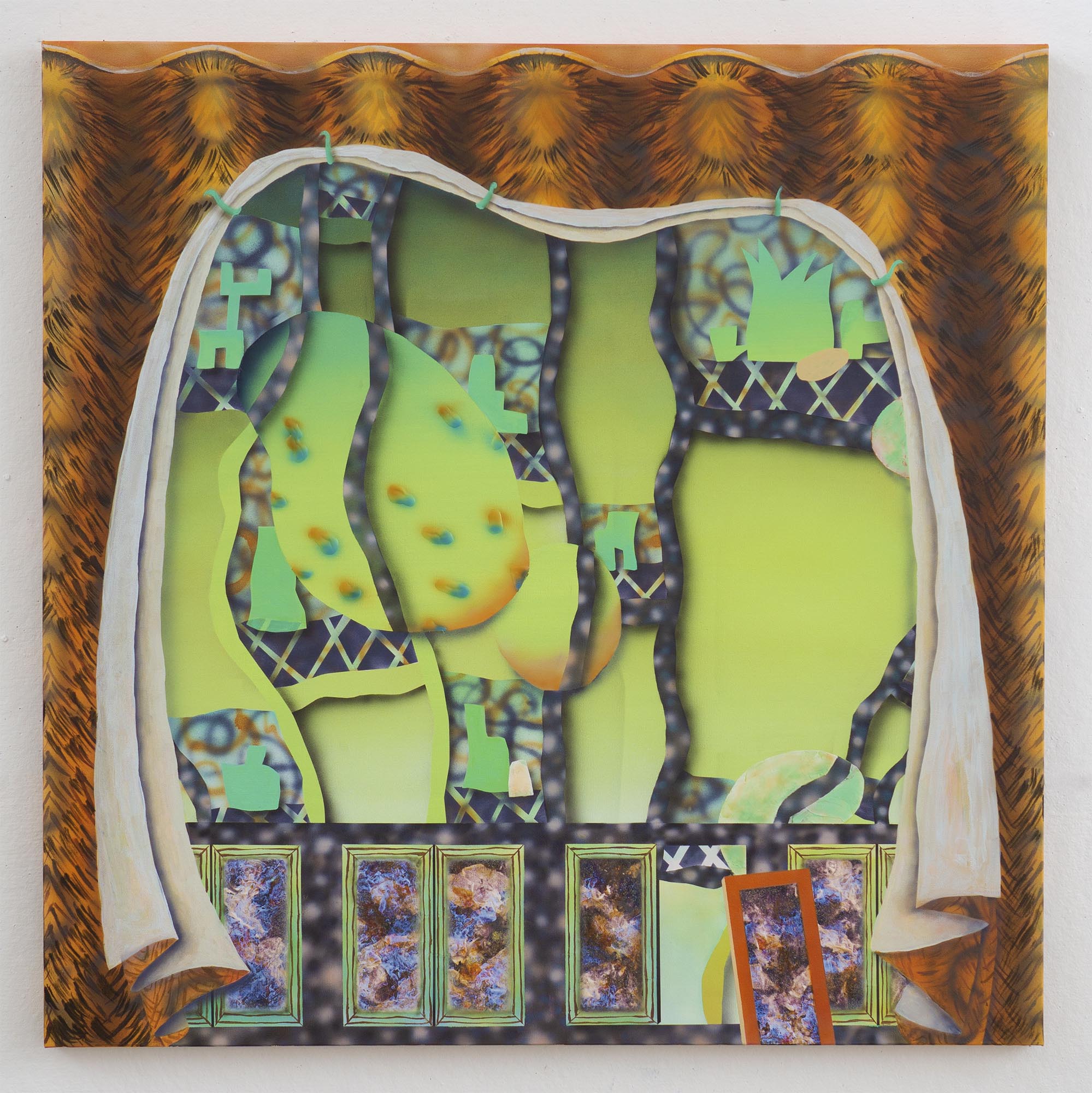
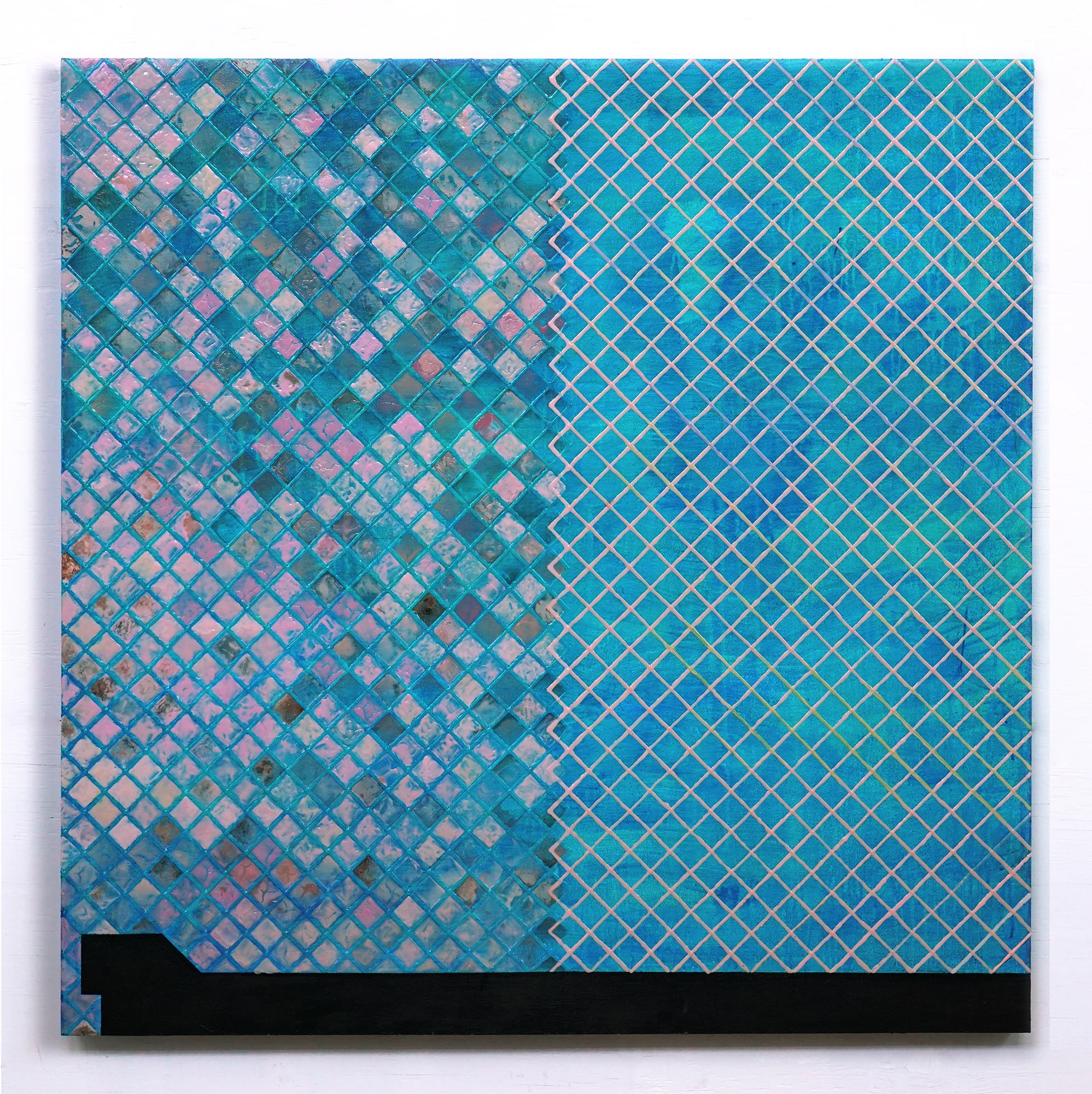
Do you work on distinct projects or do you take a broader approach to your practice?
I would say that I take a wide range of approaches to my practice under the overarching conceptual ideas. I may take a project-based approach when I work on other visual art forms, such as video and digital art. These art pieces can still be all connected to my paintings in one way or another. My approaches share a few major principles: keep abstraction as my visual language, use the grid or grid-like structure as the underlying structure, maintain the materiality, and respect the balance both conceptually and in formal aesthetic-wise. While following these principles, I allow freedom to make changes in my approaches and take different and experimental approaches. In this way, sometimes, a painting that looks independent and out of the way is created. Although I use the phrase, “a body of work” for my paintings, the decision for grouping my work can happen later for the sake of convenience, and I often have a hard time to decide which body I should include the “mavericks” in.
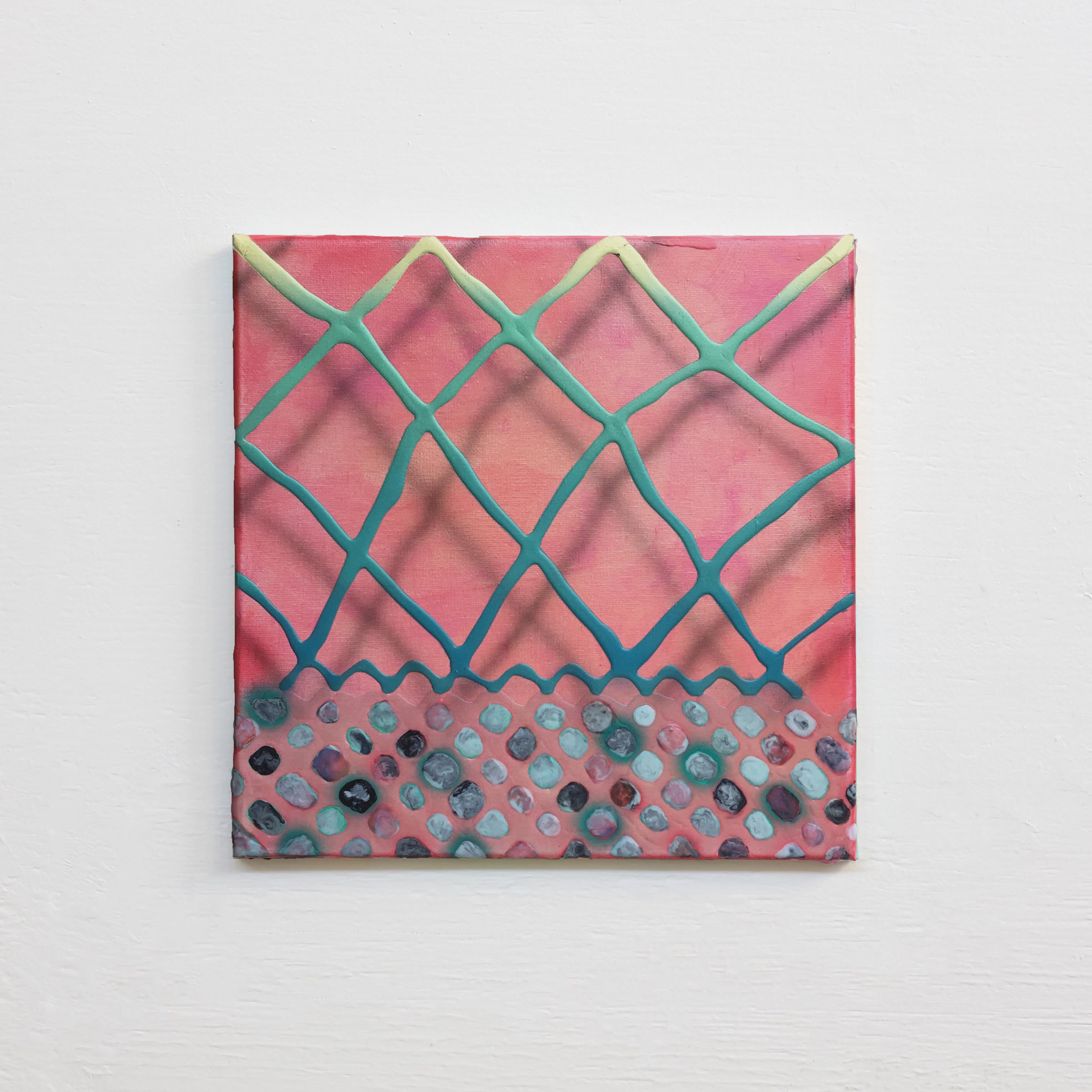

What’s a typical day like in your studio?
I start my studio day with cleaning the studio space, such as removing the dust, sorting and throwing out trash and junk and organizing things. While cleaning and organizing the space, I prepare my mind and body to accomplish the goals for the day. Then my day in the studio is filled with non-sequential activities: preparing surfaces, blending pigments with polymers, mediums, or additives, pouring, squeezing, taping or making, airbrushing, leveling, molding, sanding, drawing, doing collage, of course, painting with the brushes, and more. I have a break for eating, emailing, reading news and magazines, and watching short video clips, while I am waiting for my paint, gesso, molding paste or other medium to dry. I end my day with cleaning my airbrushes and the cups and bottles for the used paints. I like to have a separation between studio days and non-studio days. When I have to work on documentations, applications, and interviews, I spend almost all day only for the administrative work. My evenings are solely for my personal life, unless there is any project whose deadline is approaching soon. As I work mostly standing up for long hours and handling delicate tools requires intense concentration, I like to have relaxing and comforting evenings without thinking about art.
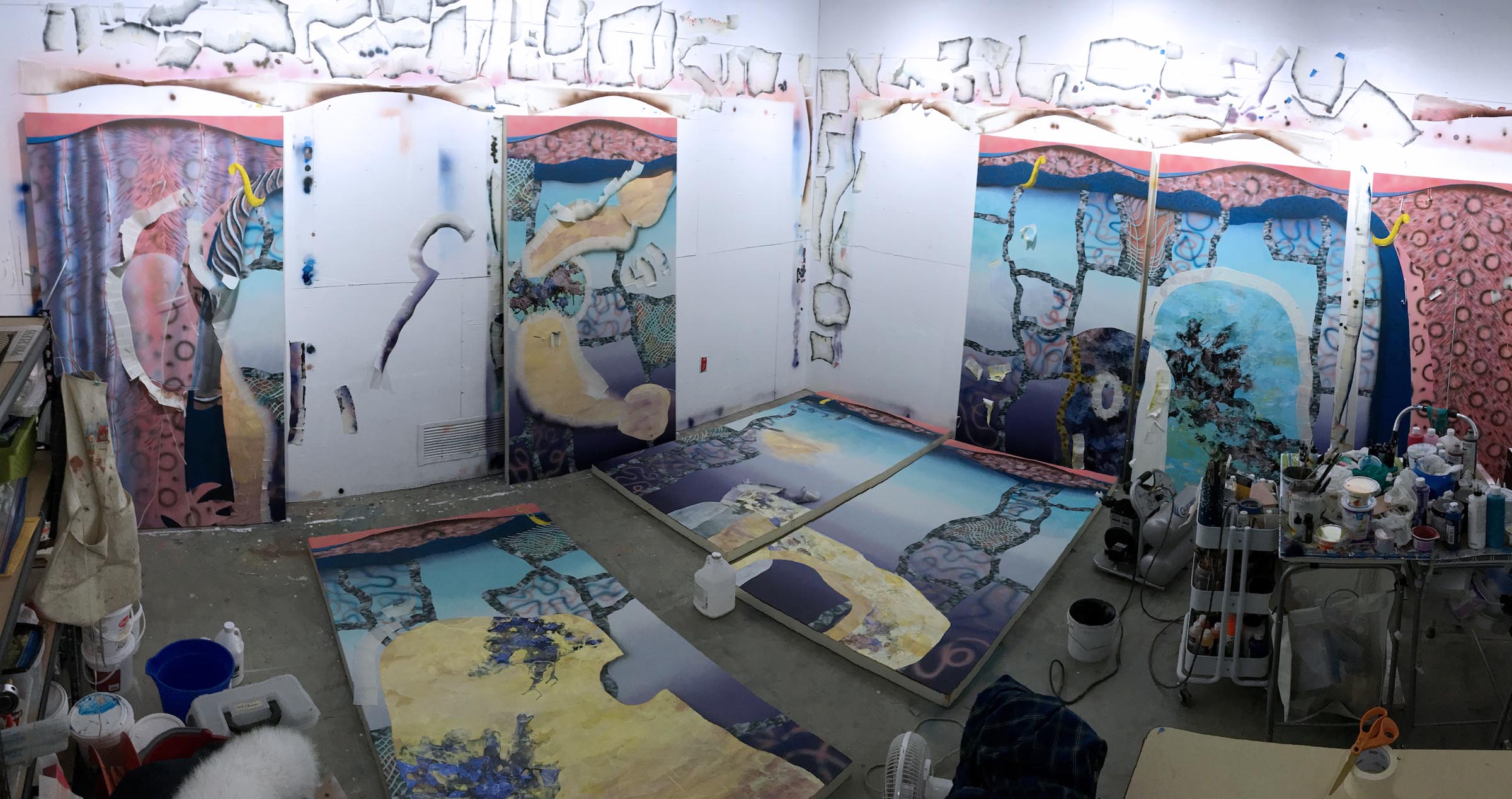

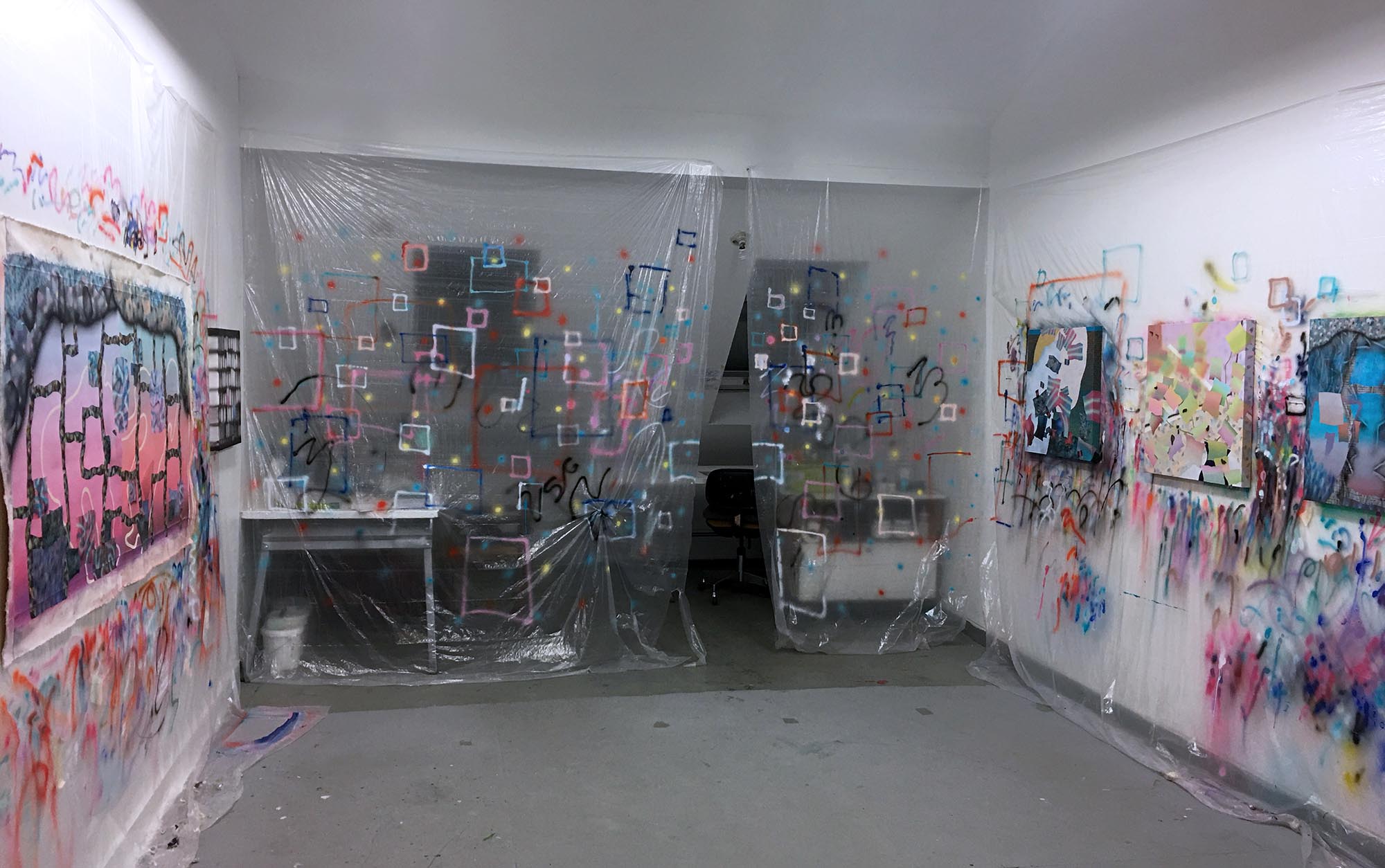
Who are your favorite artists?
I have so many favorite artists. Hilma af Klint and Agnes Martin are important artists who approached abstraction as a means of structuring philosophical and spiritual ideas beyond formalism. Jack Whitten continues to inspire me to develop the approach to focus on the materiality that is associated with the conceptual idea about identity. Charline von Heyl is my all-time favorite artist whose abstract work is so powerful, dynamic, and enigmatic. Rebecca Morris and Matt Phillips have shown me how to use the grid as a structure. Laura Owen and Jacqueline Humphries suggest ways that contemporary painting can use in this technological and digital culture. Annie Lapin demonstrates the way to combine figuration with abstraction. Avery Singer and Keltie Ferris are inspiring how to employ their airbrushing and spraying skills. Angela Heisch shares mutual interests with me in balance and optical illusion, I suppose.
Where do you go to discover new artists?
While in my MFA program at IU, I was encouraged to use the sources of school library, such as books, journals, and magazines to research artists. It is conventional but still helpful for me to discover new artists with reliable and detailed information. Also, looking at the printed high-resolution images on the actual paper give me so much better feel than I look at them on screen of my laptop or phone. I also subscribe to mailing lists of galleries, art organizations, online art magazines and art blogs. To discover more emerging artists, I cannot disagree that Instagram is the most accessible and popular platform. I am always amazed at a number of wonderful images of artworks done by so many talented artists on Instagram. It is my problem that many of those images and names on Instagram are usually temporary in my memory. In addition, I receive stimulation from in-person experience by visiting original artwork at art exhibitions, art expos and fairs, art galleries and art museums.
Su A Chae is an artist based in Bloomington who was recently shortlisted for The Hopper Prize. To learn more about the artist:
- Su A‘s finalist portfolio
- Visit Su A’s website at suachae.com
- Follow Su A on Instagram @sua_chae

























































